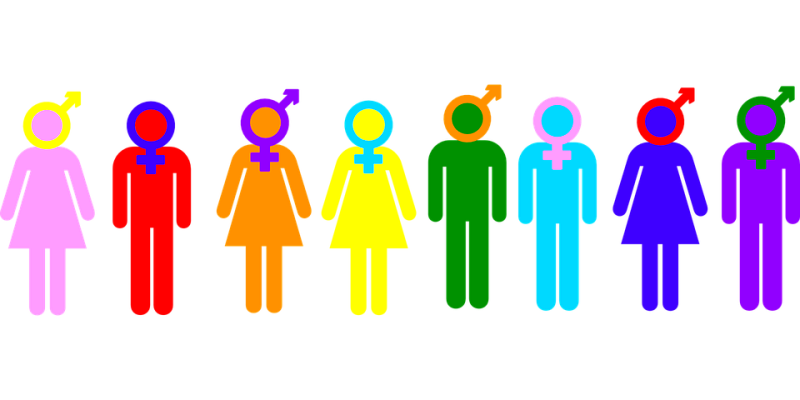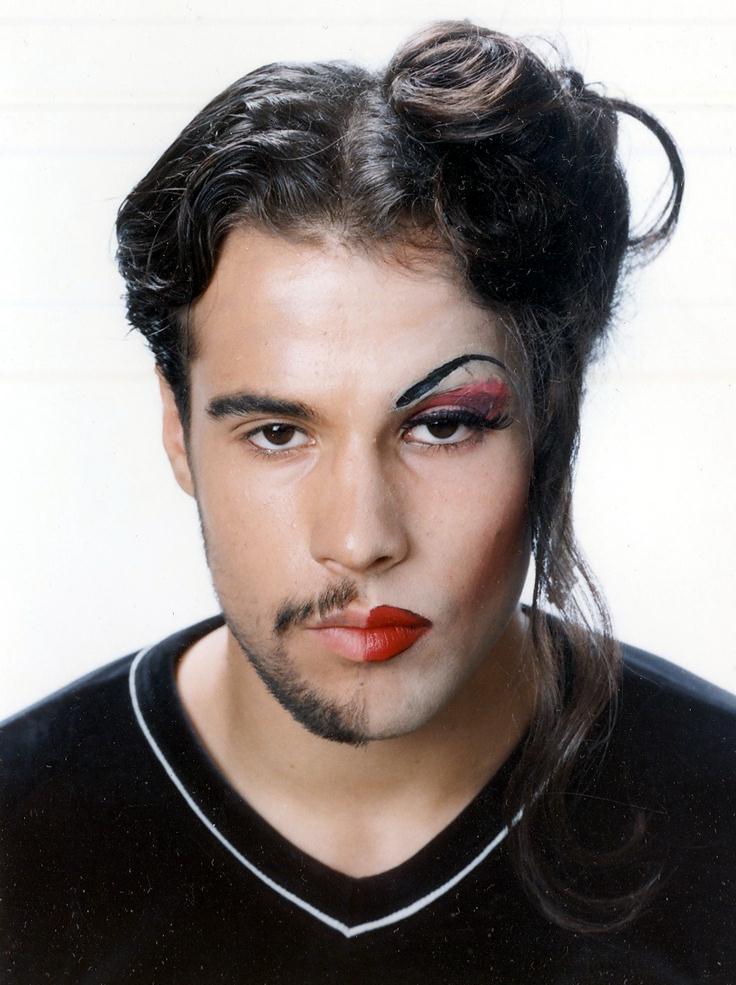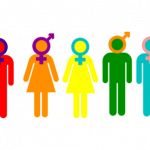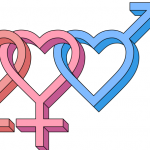“Don’t criticize what you can’t understand.” ― Bob Dylan

Image source: Google, copyright-free image, under Creative Commons License
The distinction between sex and gender is not universal. They are more than often used as interchangeable terms, and very wrongly so! Furthermore, some dictionaries do not even give them different definitions. For example, the American Heritage Dictionary files sex as, “either two divisions, designated female and male, by which organisms are classified on the basis of their reproductive organs and functions.” Sex is also listed by the Dictionary as “one’s identity as either female or male.” But considering sex and gender to mean the same thing is wide of the mark. The Oxford English Dictionary will back me up on this. According to it,
Sex “tends now to refer to biological differences.”
Gender, on the other hand, “a euphemism for the sex of a human being, often intended to emphasize the social and cultural, as opposed to the biological, distinctions between the sexes.”
Suggested read: Making a case for blurred gender boundaries: In defense of androgynous freedom
In simpler words,
Sex is an individual’s biological character, which is determined by their external genitalia and their chromosomal makeup, while gender is a social construct.
The better you understand the differences between sex and gender, the better will be your understanding of yourself and the people around you. The lack of a clear comprehension of the two terms and the array of terms associated with them like gender identity, sexuality, sexual orientation, and their categories, such as cisgenders, transgender, gender queer etc. results in homophobia transphobia, sexism, and subsequent hate crimes against the sexual minorities, crimes that will significantly diminish when we educate ourselves properly about the gender and sexuality gamut.
Sex and its categories
The biological sex of a person is determined by their physical attributes. The person’s external genitalia, secondary sexual organs, reproductive system, sex chromosome, sex hormones etc. are taken into consideration.
When an egg is fertilized by a sperm, that is when the biological sex of an embryo is established. The father ejaculates two types of sperm, one has X chromosomes, while the other has Y chromosomes. Now if the father’s X chromosome combines with the mother’s X chromosome, the baby will have an XX chromosomal makeup, which means it’s a girl child. Again, if the dad’s Y chromosome combines with the mother’s X chromosome, the kid will have an XY chromosomal makeup, which means it’s a male child.
But XX (Female) and XY (Male) are not the only categories of sex. To determine the categories of sex, we need to look at the chromosomes of individuals. Here’s a common classification:
- X – Approximately 1 in 2,000 to 1 in 5,000 people (Turner’s)
- XX – Most common form of female
- XXY – Approximately 1 in 500 to 1 in 1,000 people (Klinefelter)
- XY – Most common form of male
- XYY – Approximately 1 out of 1,000 people
- XXXY – Approximately 1 in 18,000 to 1 in 50,000 births
However, apart from the XX and XY karyotypes, the rest are considered abnormalities, and are not generally regarded as sex categories.
Like I mentioned earlier, the external genitalia are taken to be a prime factor while determining the biological sex of a person, and on this basis, there are only three broad categories of sex: Female, Male and Intersex.
According to this classification then,
Individuals born with vagina are female, while individuals born with testicles and penis are male. Those individuals who develop DSD in genitals, or Differences in Sexual Development, are called intersex.
Also, males and females have different secondary sexual characteristics due to the distinct hormonal activities in them; testosterone in males and estrogen and progesterone in females. At puberty, males develop body hair, facial hair. Their voice deepens. Their skin becomes coarser. They develop body muscles. Their external genitalia grow. Females, on the other hand, get menstruation cycles. They develop breasts. Their hip and buttock area grows because of development of adipose muscles in that area.
Again, these characteristics vary from individual to individual. Depending on climate, ethnicity, genes, nutrition and other factors some men are less hairy, have a soft voice, while some women have underdeveloped hips and breasts and huskier voice.
When a child is born with sex chromosomes that are not the usual XY and XX, and may also develop reproductive organs that are confusing, that is neither completely male nor completely female, they are called intersex. Intersex again is not a homogenous category. For example, an individual with a noticeable large clitoris (more than two-fifth of an inch) may showcase female sexual characteristics, while an individual with male sexual characteristics may have a scrotum that is divided to look more like a labium.
So this binary categorization of people on the basis of their external genitalia and external looks is rather irrational or even stupid. It is entirely uninformed and can lead to errors about how in reality the world functions.
Suggested read: Harper’s Bazaar India is covered by transgender models for the first time
Gender identity and sexual orientation
On 26th of March, 2007, a group of human rights experts launched the Yogyakarta Principles on the Application of Human Rights Law in Relation to Sexual Orientation and Gender Identity. The experts came from 25 countries (including Ireland, UK, Australia and India). Michael O’Flaherty, the Irish Human Rights expert, was responsible for drafting and developing the 29 Yogyakarta Principles. According to these principles, the expressions ‘Sexual Orientation’ and ‘Gender Identity’ are defined as follows:
“’Sexual Orientation’ is understood to refer to each person’s capacity for profound emotional, affectional and sexual attraction to, and intimate and sexual relations with individuals of a different gender or the same gender or more than one gender.”
“’Gender Identity’ is understood to refer to each person’s deeply felt internal and individual experience of gender, which may or may not correspond with the sex assigned at birth, including the personal sense of the body (which may involve, if freely chosen, modification of bodily appearance or function by medical, surgical or other means) and other expressions of gender including dress, speech and mannerisms.”
Categories of gender identity
Gender identities can seem complicated to understand. But when you are open to knowledge and try to learn in order to empathize, nothing seems impossible. Here are some categories of gender identity based on how people feel about their gender.
Cisgender
Also called cis, cisgender is someone whose gender identity and biological sex are the same. So, if you were born a girl, at birth, and feel the same way, you are a cisgender.
According to the Advocate, making cisgender into a gender identity, and not a default setting, is useful because it broadens the understanding of gender. According to K.J. Rawson, who is a transgender scholar and assistant professor at College of the Holy Cross,
“The term ‘cisgender’ is a means of accounting for privilege and trying to counteract the tendency to only name that which is different.”
There are a number of critics of cisgender, who believe that this term is unnecessary. According to them, cisgender is related to sexual orientation, which is completely wrong. This is a category of gender identity, how one identifies one’s gender. It is a term that is essential to understand the broad spectrum of gender identities.
According to a report by Everyday Feminism in 2015,
“By using ‘cis woman’ with ‘trans woman’ as opposed to ‘trans woman’ and just plain ‘woman,” we’re spreading the message that says trans woman isn’t abnormal.”
Transgender

Image source: Google, copyright-free image, under Creative Commons License
Also called trans, the transgender is someone whose biological sex, at the time of birth, and gender identity do not match. According to the Merriam-Webster’s, a transgender is one
“who identifies with or expresses a gender identity that differs from the one which corresponds to the person’s sex at birth.”
This is an umbrella term that takes in its ambit a range of gender identities. If someone identifies as a transgender, it does not necessarily mean that he or she has undergone surgery and altered their bodies or are taking hormones to change their physical appearance.
Gender fluid
If a person calls himself or herself as gender fluid, it means they identify as male, female or both, at different points and situations. It is a more accommodating range of expressing one’s gender. It varies with interests and behaviors, which change from day to day.
Ruby Rose, who calls herself gender fluid told magazine Elle, in 2014,
“Gender fluidity is not really feeling like you’re at one end of the spectrum or the other. … For the most part, I definitely don’t identify as any gender. I’m not a guy; I don’t really feel like a woman, but obviously I was born one. So, I’m somewhere in the middle, which — in my perfect imagination — is like having the best of both sexes. I have a lot of characteristics that would normally be present in a guy and then less that would be present in a woman. But then sometimes I’ll put on a skirt — like today.”
Genderqueer

Image source: Google, copyright-free image, under Creative Commons License
Genderqueer are those who, according to a definition offered by GLAAD,
“experience their gender identity and/or gender expression as falling outside the categories of man and woman. They may define their gender as falling somewhere in between man and woman, or they may define it as wholly different from these terms.”
Genderqueer are people who think that gender expression and identity both cannot be binary alone. They believe that there are more than two genders.
Suggested read: The Saree Man of India is making a solid point about the gender fluidity of the garment
The Third Gender
Unlike what is popularly believed, when we identify a group as third gender, we are not putting them in the third place after the first and the second gender, rather we are saying that they exist despite the first two. Third gender is a very embracing term. Anyone who does not conform to the gender stereotypes, belongs to the third gender. In that sense, even if your biological sex is male/female and you are straight when it comes to sexual orientation, you may belong to the third gender during moments or situations when you break a gender stereotype and act otherwise. So, third gender is separated from the cisgender, on the basis of gender identity, and not on the basis of either sexual orientation or differences in anatomy.
To put things into perspective, look at this example: There are days when a man, who is a man, anatomically, and is straight, in terms of sexual orientation, likes to put ghungrus because he believes that the ghungroo completes him. He defines his gender identity that way which is far from the stereotype. In that sense, he belongs to the third gender. Again, a woman who is anatomically a woman, and is a lesbian, in terms of sexual orientation, may perform ‘karwa chauth’ for her partner. That way she is conforming to the whole gender construction, and therefore, cannot be said to belong to the third gender. Thirdly, if and when a gay man dresses up as a woman because that is how he defines his gender identity, then he is a member of the third gender. Therefore, 7 billion people on the planet have 7 billion gender identities. Not just that, gender identity of each person changes with the situation the person is faced with, or the mood he/she is in.
The third gender, we can thus say, are people who do not fall into the other two categories, and only if you ask each person (and provided he/she is telling you the truth) will you understand if he or she is of the third gender or not. Now, judiciaries of different countries have taken the responsibility onto themselves to determine who the third gender represents, for the purpose of outlining their rights and duties. The Indian system, for instance, does not consider the LGBT community a part of the category because it believes the categorization is not done in terms of sexual orientation. However, as we now know, the Indian system is only partly right. Though the labeling should not done on the basis of sexual orientation, it also should not be done, in terms of anatomy. The basis of classification should ideally be gender identity. Gender fluid and gender queer belong to the third gender.
Supposing one’s gender by spotting their biological sex or appearance is a very bad conclusion, and something we should all refrain from. So whenever you are not sure how you should refer to someone, listen to the pronouns other people use to refer to them. If you must ask what pronoun the person likes being described by, you should start with your own preference, says GLAAD. Instead of enquiring about their genitalia or guessing from their outward appearance (which is invasive, to say the least!), ask which pronouns you can use to address them, and honor their answer. This isn’t intrusive; it is rather respectful.
Featured image source: Google, copyright-free image, under Creative Commons License













